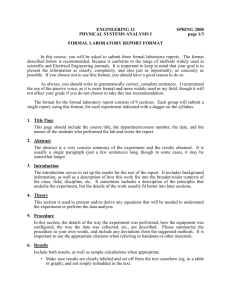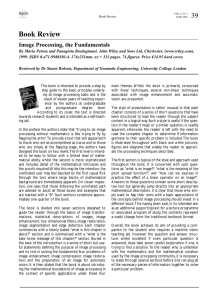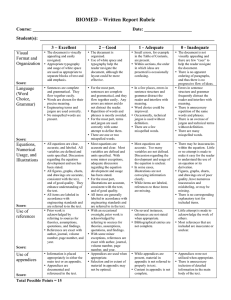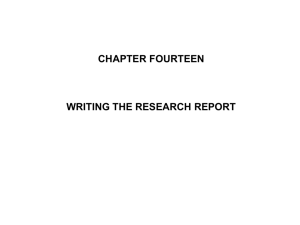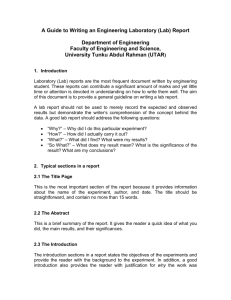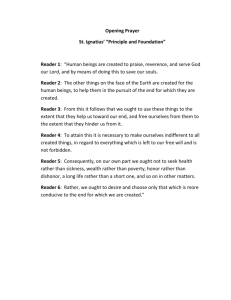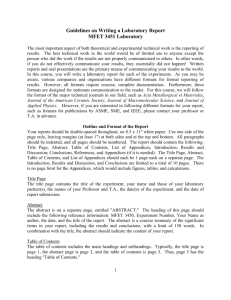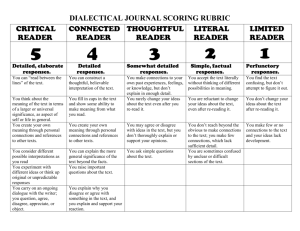Writing a Formal Mathematical Report
advertisement
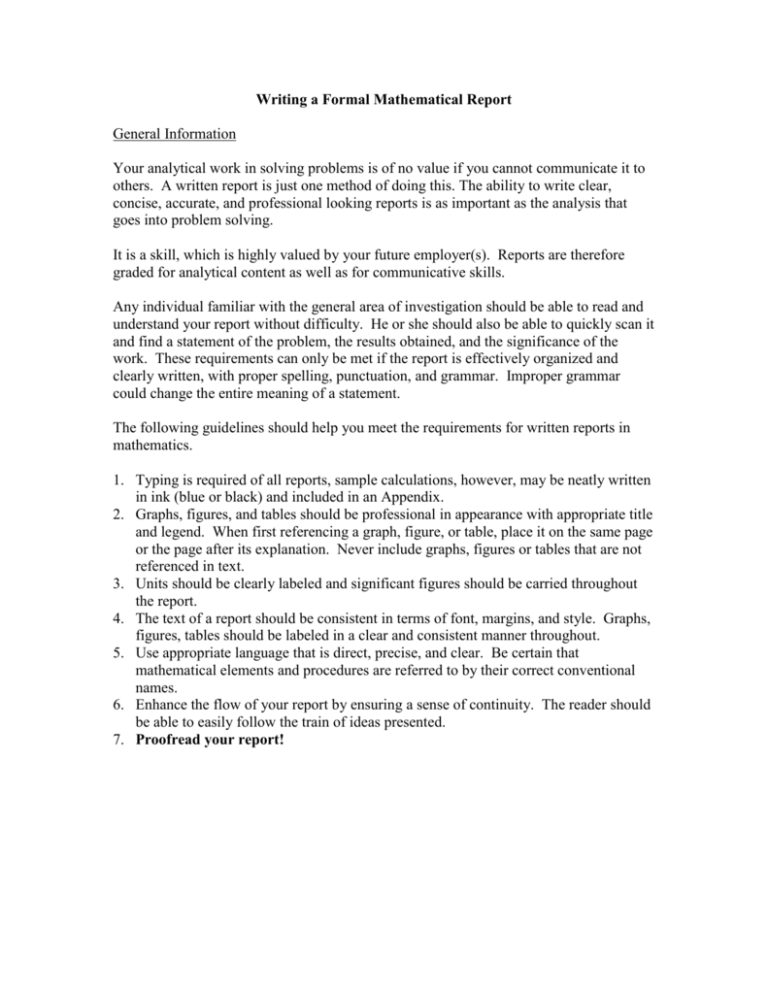
Writing a Formal Mathematical Report General Information Your analytical work in solving problems is of no value if you cannot communicate it to others. A written report is just one method of doing this. The ability to write clear, concise, accurate, and professional looking reports is as important as the analysis that goes into problem solving. It is a skill, which is highly valued by your future employer(s). Reports are therefore graded for analytical content as well as for communicative skills. Any individual familiar with the general area of investigation should be able to read and understand your report without difficulty. He or she should also be able to quickly scan it and find a statement of the problem, the results obtained, and the significance of the work. These requirements can only be met if the report is effectively organized and clearly written, with proper spelling, punctuation, and grammar. Improper grammar could change the entire meaning of a statement. The following guidelines should help you meet the requirements for written reports in mathematics. 1. Typing is required of all reports, sample calculations, however, may be neatly written in ink (blue or black) and included in an Appendix. 2. Graphs, figures, and tables should be professional in appearance with appropriate title and legend. When first referencing a graph, figure, or table, place it on the same page or the page after its explanation. Never include graphs, figures or tables that are not referenced in text. 3. Units should be clearly labeled and significant figures should be carried throughout the report. 4. The text of a report should be consistent in terms of font, margins, and style. Graphs, figures, tables should be labeled in a clear and consistent manner throughout. 5. Use appropriate language that is direct, precise, and clear. Be certain that mathematical elements and procedures are referred to by their correct conventional names. 6. Enhance the flow of your report by ensuring a sense of continuity. The reader should be able to easily follow the train of ideas presented. 7. Proofread your report! Organization of Report The formal report is written to summarize an analysis or investigation of problems of interest. The elements that should be included in your report are: Letter of Summary Technical Report Body: Introduction Theory Analysis Results & Discussion Conclusions References (if applicable) Appendices (if applicable) In an effort to provide more detailed guidelines for written reports, the following descriptions are given for required element of each report. Letter of Summary: The letter of summary is separate from the technical report. While the letter may refer to the technical report, the report should never refer the reader to the letter. It should be assumed that the reader of the letter might not have access to the report and vise versus. Thus each should be complete and independent. Letter of summary should not be written until all other parts of the report have been completed. The letter provides a basic summary, highlighting the main points of the technical report. The letter must stand alone, presenting all relevant ideas and results to readers who will not go into the report for explanation. Body Note: The sections comprising the body of the report should not be labeled or given as separate sections. Rather they should flow, one to the next to form one concise document. Introduction: The introduction should describe the motivation for the project and provide any germane background information. Do not assume the reader has access to the instructions outlining the goals of the project. At the end of the introduction, briefly describe the goals of the report and note what will be presented. The introduction should also motivate the reader to read on. Analysis: The underlying mathematical basis is presented in this section. The analysis should proceed from the general underlying theory to specific relationships and formulas being developed. The analysis should not contain a simple reproduction of the theory found in references; rather it should represent your understanding of how the general theory relates to the specific problem at hand. Analytical results that have been derived previously in the text can be referenced. Their derivation need not be repeated unless it is central to the understanding of the work. All relevant mathematical analysis should be presented. What is crucial to a good analysis are the supporting explanations and commentary on the mathematics. Do not require the reader to consult specific texts to understand the specific analysis of the problem. Results & Discussion: Here the major results of your analysis are presented in summary form. The summary is then proceeded by your interpretation of the results, by noting what is “as expected’, what is unexpected, what is of primary interest, and what is particularly intriguing. Be sure to answer here any questions that were asked of you in the project. Conclusions: Here you are to represent your opinion as to whether of not you have meet the objectives set out in the introduction. It is important that no new material be presented here. Simply provide us with an overview of the significance of the material contained within previous sections of the report. References: A list of references should be provided, indicating all sources of information contained in the report. Appendices: The appendices are optional sections designed for all information that does not fit easily in the main body of the text. This can include sample calculations, lengthy data, lists of nomenclature or units, copy of original problem,
